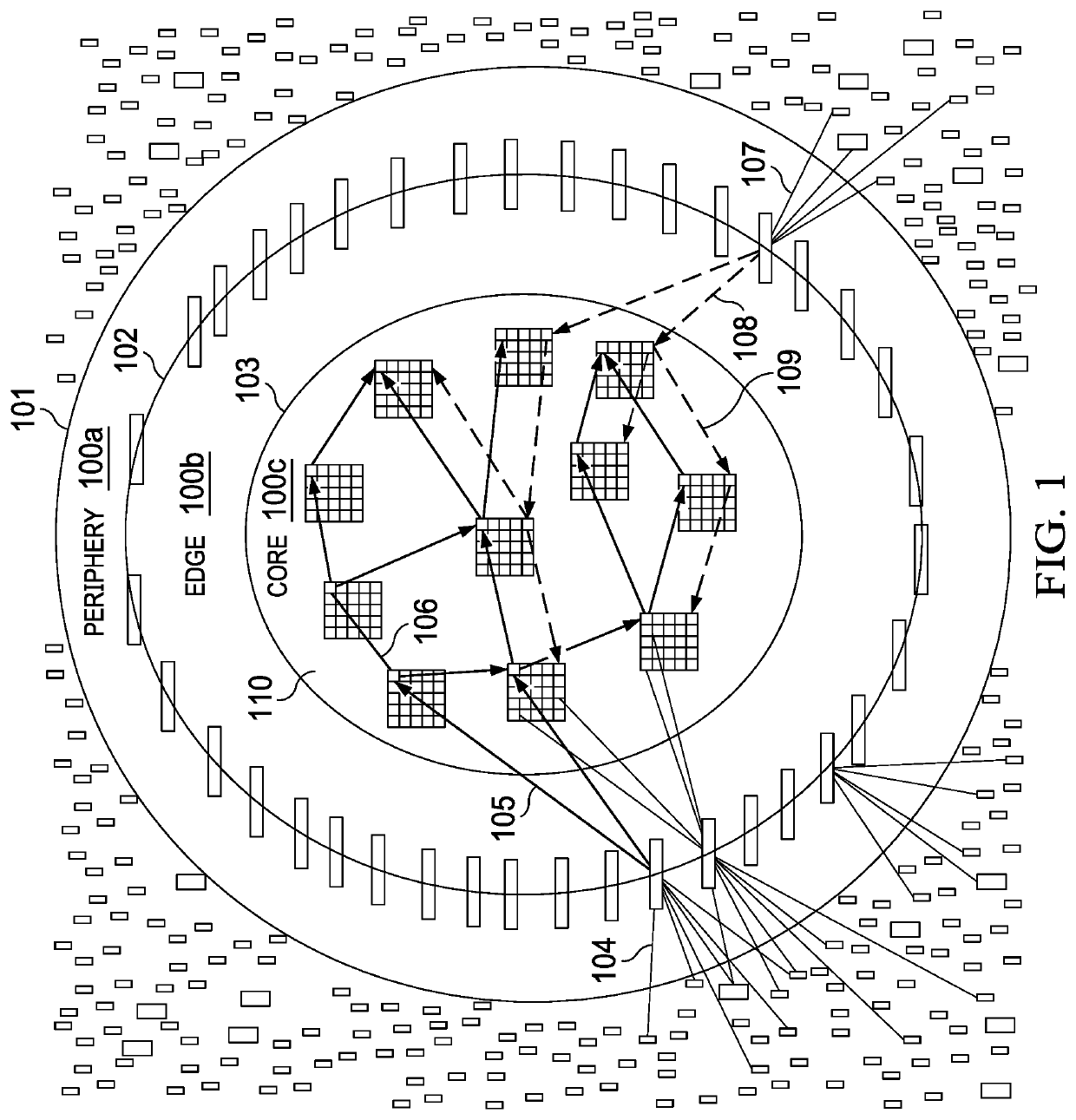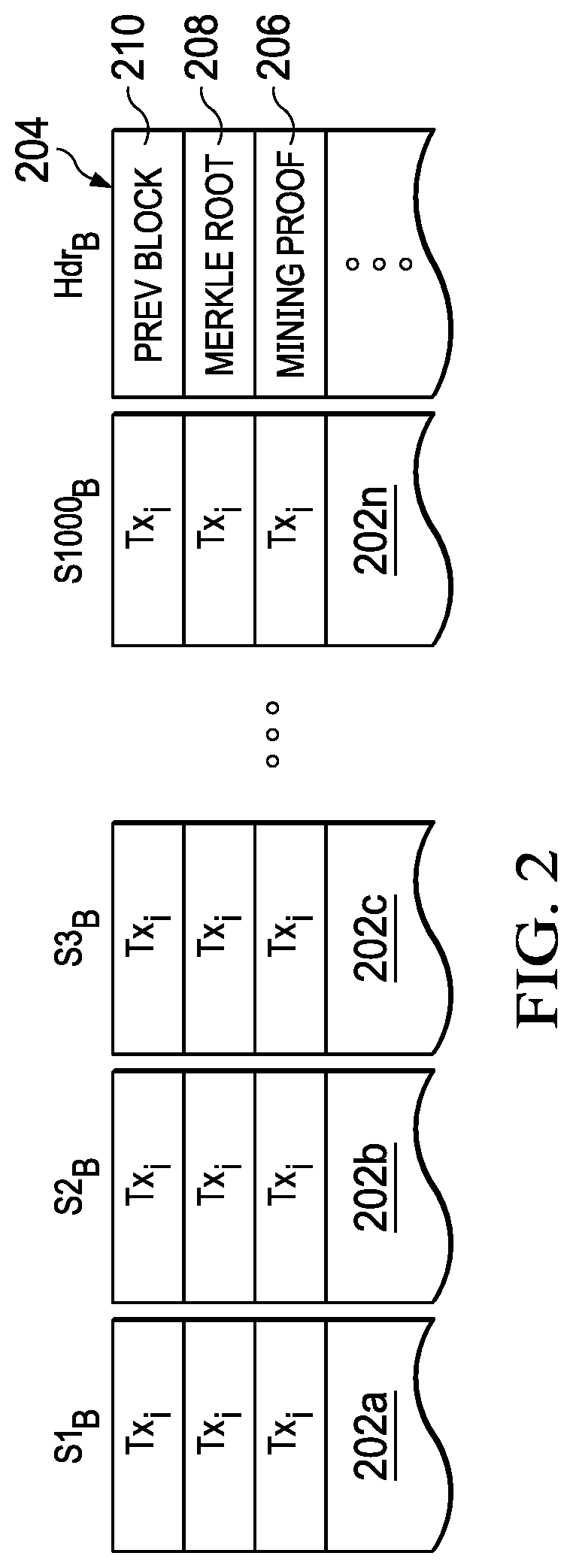Concurrent transaction processing in a high performance distributed system of record
a distributed system and transaction processing technology, applied in data processing applications, multi-programming arrangements, instruments, etc., can solve the problems of severe limitations on the achievable performance of blockchain implementations, and achieve the effects of low latency, low synchronization, and high performan
- Summary
- Abstract
- Description
- Claims
- Application Information
AI Technical Summary
Benefits of technology
Problems solved by technology
Method used
Image
Examples
Embodiment Construction
Overall High Level Design
[0025]FIG. 1 depicts a scalable, high performance architecture for implementing a distributed system of record with transactions organized into a blockchain. At a high level, the system is divided into multiple functional areas as shown, namely, a periphery 100a, an edge 100b, and a core 100c. The system may comprise other functional areas to facilitate delivery, administration, operations, management, configuration, analytics, and the like, but for simplicity these areas are not depicted. As used herein, the periphery 100a refers generally to elements associated with a boundary 101. These elements typically include client-server based electronic wallets or wallet devices, terminal and point of sale devices, legacy financial network elements and associated adapters. Generally, and as used herein, any element involved with creating and consuming transactions including, without limitation, financial transactions, may be an element in the periphery 101. The per...
PUM
 Login to View More
Login to View More Abstract
Description
Claims
Application Information
 Login to View More
Login to View More - R&D
- Intellectual Property
- Life Sciences
- Materials
- Tech Scout
- Unparalleled Data Quality
- Higher Quality Content
- 60% Fewer Hallucinations
Browse by: Latest US Patents, China's latest patents, Technical Efficacy Thesaurus, Application Domain, Technology Topic, Popular Technical Reports.
© 2025 PatSnap. All rights reserved.Legal|Privacy policy|Modern Slavery Act Transparency Statement|Sitemap|About US| Contact US: help@patsnap.com



